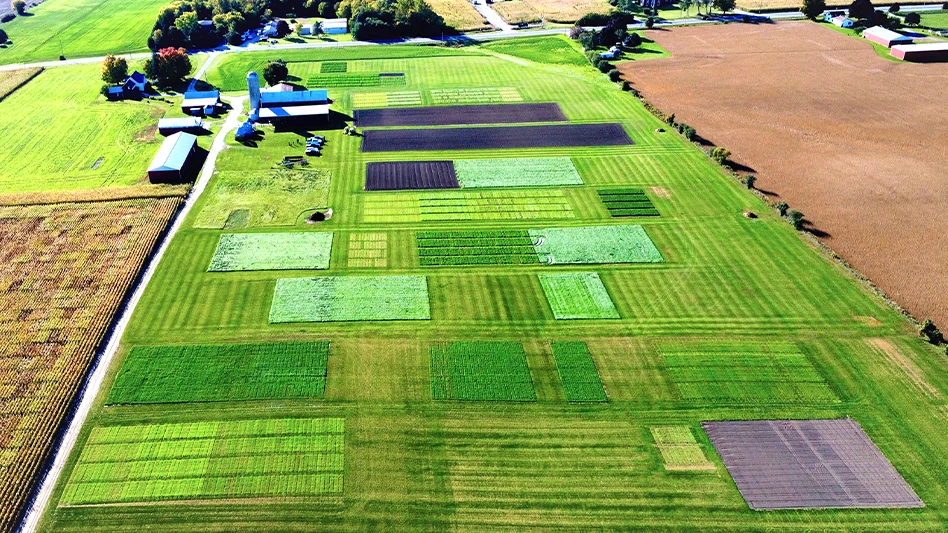
Martin Sternberg
Capillary Concrete’s new Capillary Hydroponics system is delivering results a year into its first major customer installation at Hawk’s Landing Golf Club in Orlando. Capillary Concrete built a new tee box last fall at Hawk’s Landing Golf Club, incorporating the Capillary Hydroponics system, with superintendent Josh Kelley’s team and contractor Double Eagle Golf Works.
The system divides the tee box into two areas, with a layer of Capillary Concrete under the rootzone. Two air lift pumps, powered by a 55-watt solar panel, move water inside the closed system. All irrigation is applied subsurface; with water is mainly lost through transpiration and minimal evaporation. The system creates a moving water table, using capillary action to move water out of one zone and into another. The water pushes the heavier carbon dioxide molecules out of the rootzone and sucks in oxygen to replace them. It is a far more successful method of gas exchange in the rootzone than conventional methods of aeration.
“We began building the test tee in late September,” Kelley said. “It was completed and grassed in early October. Now, a typical tee box is obviously just a pile of dirt that you shape up. As you get to the higher end, you might put drainage under it, or even use a special rootzone. The process here was that we laid out the rectangular box, cored down 12 inches, and then installed two inches of Capillary Concrete before filling up with sand, levelling and sodding. It was not a difficult project.”
Kelley described it as a “a trial site.” “We aren’t doing anything special to it,” he said. “We have run no overhead irrigation at all, except to water in two applications of herbicide. The tee itself has performed superbly. No hotspots, no disease issues, no wet areas.”
“When we installed the tee, we put a flow meter on the irrigation so we could measure exactly how much water was being used,” said Martin Sternberg, the inventor and CEO of Capillary Concrete, and a Swedish golf pro and course superintendent. “After almost a year, we can say that it has used 65 percent less water than a similar-sized, conventionally-irrigated tee box, and we think that we can tweak the system to get that figure to 85 percent.”
Sternberg first experimented with tees five years ago in Sweden, primarily as a subsurface irrigation project. “We know we are getting up to 6,000 percent more gas exchange in the rootzone in comparison to convention methods of aeration, and it is obvious that will have a massive impact on turf health,” he said. “This is akin to what happens naturally in a seaside links environment, where you typically have a very low water table – but critically, it moves with the tide. That promotes a gas exchange. The best way to promote gas exchange is to push it with a waterfront.”
Get curated news on YOUR industry.
Enter your email to receive our newsletters.Latest from Golf Course Industry
- The Fittest Podcast in Turf: Episode 1
- GCSAA announces Grassroots Ambassador Leadership Award recipients
- Reel Turf Techs: David Gummo
- PBI-Gordon promotes two to executive level
- VIDEO: A First Green morning
- Bloom Golf Partners adds HR expert
- Seeking sustainability in Vietnam
- Kerns featured in Envu root diseases webinar







